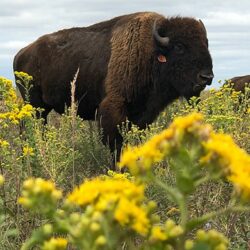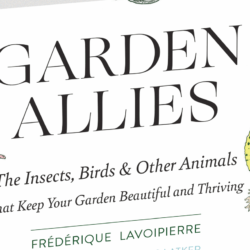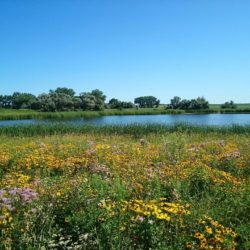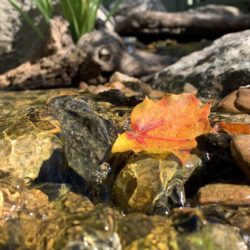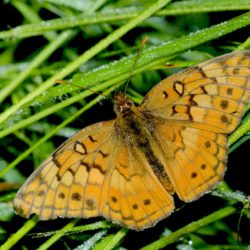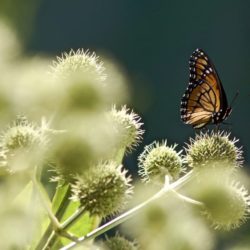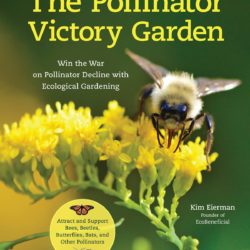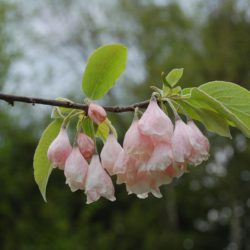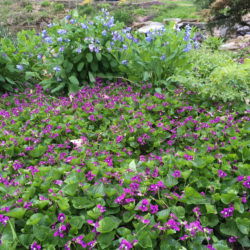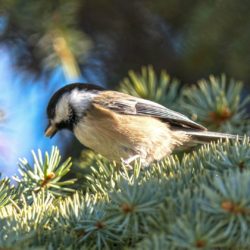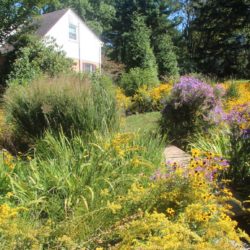Originally published by Zoo New England. Republished with permission Written by: Matt Kamm, Zoo New England Zoo New England, the organization that runs the Franklin Park (Boston, MA) and Stone…
Wildlife Habitats
Reintroducing bison to grasslands increases plant diversity, drought resilience, study finds – Kansas State University
Originally published by Kansas State University. Reprinted with permission By: Erin Pennington MANHATTAN — A Kansas State University-led study has found that reintroducing bison — a formerly dominant grazer —…
Garden Allies
The Insects, Birds & Other Animals That Keep Your Garden Beautiful and Thriving
In Garden Allies, author Frederique Lavoipierre encourages a perspective shift towards the critters in our gardens. Instead of thinking of garden inhabitants as good or bad, she encourages us to think of them in their ecological roles, with a food-web perspective. What results is a book jam-packed with identification clues, gardening guidance, and stories that had me penciling exclamation points in the margins.
The South Dakota Pollinator Project
By Paul Clinton
Over the past several years, one of my favorite landscape architecture projects has been developing and monitoring five pollinator plots at the South Dakota Department of Transportation (SDDOT) rest areas in the eastern part of the state along Interstate 29. As a landscape architect, it is satisfying to witness the return of native prairie plant communities and be a part of diverse projects – and working in South Dakota has allowed me to do both.
COVID’s Pendulum
By Trevor Smith
Goodbye 2020 and good riddance!!! Though we are not out of the woods yet, I couldn’t help but feel a weight lifted as the ball fell at the stroke of midnight. 2020 started like any other year, with hope and possibility. The anticipation of a new season combined with knowing how crazy things would be in spring felt like I was on a rollercoaster about to hit that big drop. All I could do was hold on as the world rushed past. Little did we know that drop would be less like a rollercoaster and more akin to Niagara Falls.
Mitigating the Effects of Climate Change On Grassland Butterflies
By Angela Laws
Declining biodiversity has been making its way into the news more and more as researchers continue to record losses in plant and animal populations. Insects are no exception, and several recent studies that use long-term data sets show a marked reduction in insect abundance. A variety of factors contribute to these insect declines, including the loss of habitat, pesticides, invasive species, and, increasingly, climate change.
North American Prairie Species of New England
By Neil Diboll
Many flowers and grasses commonly associated with Midwestern prairies also occur in the meadows of New England. Some species are widely distributed throughout the region, while others are only occasional or rare. Most are more common in the prairie region, but some are abundant in the Northeast.
Book Review: The Pollinator Victory Garden
Written by Kim Eierman, Published by Quarry Books, (2020)
Reviewed by Georgia Harris
I first heard about Kim Eierman’s book The Pollinator Victory Garden at the beginning of the COVID-19 lockdown. While Eierman could not have predicted that the release of her book would coincide with a pandemic, the timing is particularly appropriate as more people are finding time to work in and enjoy their yards and gardens.
Why Aren’t These Plants in Every Garden? Three Great Plants to Know and Grow
by Carolyn Summers
Throughout her career working with people, plants, and landscapes, author/designer and gardener extraordinaire Carolyn Summers has often been puzzled by the lack of interest in certain plants that she finds exceptionally useful. These plants bridge the gap that sometimes exists between what humans want and what wildlife needs. Carolyn introduces us to three underused plants that are a must-have for native gardeners.
Weed or Habitat?
Contributors: Leslie Duthie and Ellen Sousa
ELA invited a couple of members to identify the “weeds” they like to leave in the landscape for their habitat value.
A Chickadee’s Guide to Gardening: How to Create Habitat for Birds in Urban Settings
Conference Session Review by Melanie Kenney
As humans continue to shape and dominate the landscape, conservationists, land managers, homeowners, landscape professionals, and researchers need information about how wildlife interact with and make use of resources available in urban, suburban, and agricultural green spaces. Dr. Desirée Narango, Postdoctoral Researcher at the City University of New York, Visiting Researcher at the University of Massachusetts, Amherst, and Research Associate with the Smithsonian Migratory Bird Center, presented an exciting new set of research findings focusing on how songbirds navigate, feed, and reproduce in urban and suburban green spaces, using the Carolina chickadee (Poecile carolinensis) as a model insect-eater.
Designing for Pollinators and Other Wildlife
As demand grows for plants that support pollinators and other wildlife, ELA reached out to a few experts to find out which species they recommend including in every landscape design.

